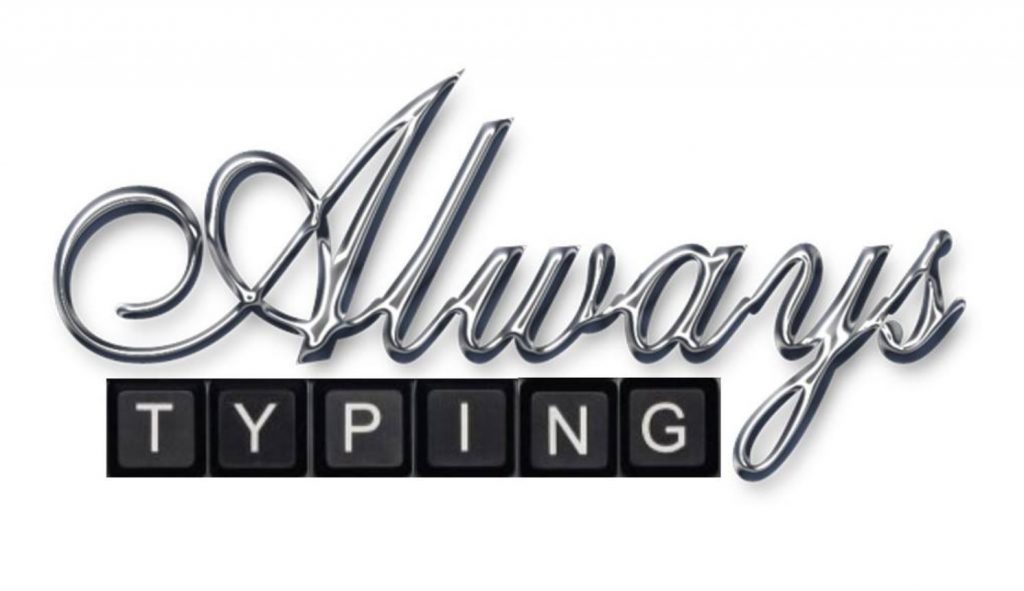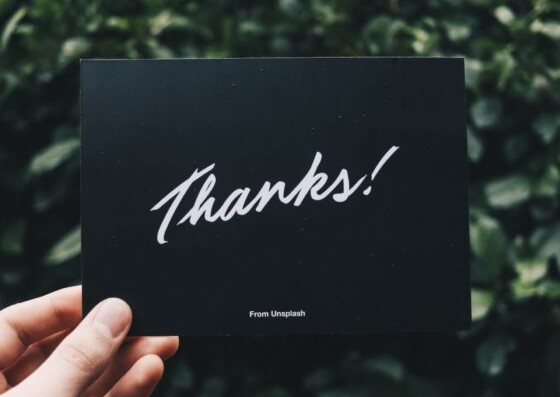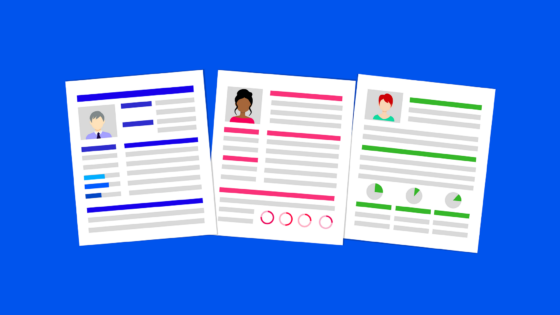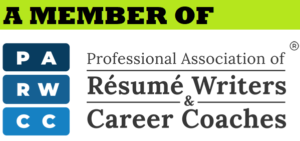Did you know that 81% of hiring managers will not hire a candidate that speaks badly of their former employer? Or that 76% will not hire candidates who are perceived as arrogant? There are tons of other reasons interviews go badly, so you must understand what not to do. This article covers the most common interview mistakes. You’ll learn which mistakes job seekers seem to make over and over again. Also, you’ll learn how to save yourself if you did have a mishap. The Most Common Interview Mistakes Job Seekers Make No one is perfect, not even the recruiter, but some interview mistakes are easily avoidable. Your success hinges on performing some due diligence, including things like performing some research and setting the proper job search goals. These are the most common interview mistakes to avoid: Some of these seem like no-brainers, but they happen every day. It’s important to avoid letting your nerves get the best of you during an interview. With preparation and practice, you can easily ace your next interview. How to Overcome the Biggest Interview Mistakes The best way to avoid several of these mistakes is to prepare properly. That means dressing in an appropriate outfit, researching the company and the interviewer, and practicing your responses. Perhaps you find that you’re running late for the interview. Be proactive about this mistake. Call the company and let them know – don’t wait until you’re there and start to make excuses. The key to overcoming interview blunders is to own your error, apologize, and find out what you can do to make up for it. Sometimes the mistakes made are very offensive to the interviewer, and there isn’t much hope of recovery. In these instances, it’s best to thank them for their time, send a quick email, and move on to other job opportunities. The most important thing is to learn from your mistake, so it doesn’t happen again! Should You Follow Up After Making Job Interview Mistakes? Absolutely! Everyone makes mistakes. Following up with the interviewer shows you are still interested in the role and that you are a professional. Not only does it put your name back in front of the hiring manager, but it also allows you to dispel any oopsies you made during the interview. Plus, emailing a quick thank-you note doesn’t take a lot of effort, so you don’t have anything to lose. Tips on How to Avoid Mistakes Following these tips will help you feel more confident in your job search and help you avoid the mishaps many people make. Research the Company The hiring manager has done their due diligence and looked through your resume and possibly your LinkedIn profile. You have to do the same. Occasionally, you can’t find the interviewer online, but you can find out information about the company. The about section on the company’s website and the social profiles it has are great resources. Looking up articles to see if the company has made the news recently is another way to learn more about any major projects they may have coming up. You don’t have to know everything about the organization, but knowing the basics is a must if you want to impress your interviewer. Review Common Interview Questions Some common interview questions are asked by almost all interviewers. You can easily find an extensive list and then practice how you answer each. For example, most interviews have these questions: Why do you want to work for us? Why do you want this position? Or why are you a great fit for this position? What are your strengths (or weaknesses)? Tell me about a time when… Tell me about yourself A question about a specific problem and how you solved it By putting in the effort now, you have answers for interviews to come, too. So, even if the one you are focusing on doesn’t work out, you are more prepared for the next. Get a Professional Outfit If you are looking for a job, you may be tight on money. There are career centers, thrift stores, and even some non-profit organizations that will help people get interview-appropriate outfits. You can do a quick Google search or ask around in your community for local resources. Obviously, you can purchase a new outfit, if you have the funds. There are two types of attire–business casual and professional. For business casual, you’ll want a nice pair of slacks and a professional-looking blouse or button shirt. Professional attire is some type of suit. Learn Interviewing Techniques You may have heard about the STAR method. It is a great technique used for both the resume and the interview. With it, you shape your answers based on the following: Situation Task Action Result This gives the interviewer a clear outline of what the problem was, what you were tasked to do, what actions you took to solve it, and what results happened from those actions. The STAR method makes your accomplishments more impactful so they stick with the hiring manager. Get Your Resume Ready for Your Search Today Now you understand common interview mistakes and what steps to take to avoid them. We hope this article helped you understand the importance of preparing for your next interview! Before you start interviewing, you must ensure your resume is interview ready. A professionally written resume lands approximately 40% more interviews than other resumes. Contact us today or check out our services to learn more.
How to Send a Follow-Up Email After an Interview With Examples
Did you know job interviewers have about a 37% chance of getting an offer after one interview? Did you also know you can improve that chance by sending a follow-up email after an interview? It is not only polite, but it makes a good impression on the hiring manager/interviewer. Plus, it is an opportunity to get your name in front of the decision-maker one more time. Interview follow-up is often a daunting task because most people don’t know the rules around what to do and when. If you do it too quickly, you look desperate. If you wait too long, it seems like an afterthought. So, when do you send a follow-up? Keep reading to learn more about the guidelines for following up after your interview. And get an example you can use to follow-up after your next meeting! How to Write a Thank You Email After an Interview Despite what many people think, sending a thank you note after an interview doesn’t take long to complete. While writing a letter may be simple and not take a lot of time, the gesture is loud and memorable with hiring managers. When writing your thank you letter after an interview, make sure you include the following: A personalized greeting Show gratitude for their time and effort Let them know once again how interested you are in the role Be specific when showing interest in the role; include the title Include a question about the next steps and/or status of your application Include any additional information that was requested (such as references) Thank them again for their time Let them know you look forward to hearing from them soon Sign it with your name and contact information You must proofread your email. You can run it through Grammarly’s free app or get a friend to look it over. You don’t want to get disqualified for a simple mistake. Example of a Job Interview follow-up Email A follow-up thank you note does not have to be a letter. It can be a few short paragraphs that express your gratitude and interest. Here is an example: Dear interviewer, I hope you are doing well today. I wanted to send a short note to thank you again for the opportunity to interview for the open role title with the company’s name. I enjoyed getting to know more about you, the company, and the team. I was hoping to follow-up about the status of my application and find out the next steps. I am extremely interested in the role and believe I am a great fit based on two or three qualifications discussed during the interview. I look forward to speaking to you soon. Sincerely, Your name email/phone number You can even use this exact template and fill in the bolded and italicized parts of it. When to Send a follow-up Email After an Interview You need to send a thank you note within 24-48 hours after the initial interview. You likely won’t have a decision in that amount of time, but sending it within that time frame is recommended in the resume-writing industry. This lets the interviewer know you are interested in the role and are professional. It is okay to send another email after 7-10 days following the initial thank you to check on the status of the application. You don’t want to send multiple emails in a short time or continue to send emails if you do not receive a response. Hiring managers are very busy, and some companies don’t follow-up with candidates who didn’t make the cut. Here’s What to do if You Have Completed Multiple Interviews The above rules are best followed after an initial interview. But what if you are past that interview and waiting for a final decision? If you get past the first interview, we recommend you ask the recruiter in person about how long they think it will take to make a decision. In fact, a great place to ask this question is at the end of your interview when they want to know if you have questions for them. Most companies don’t spend a very long time on this part of the process. In fact, only 43% of job postings close in 30 days. If you still haven’t heard from them after a week or so, it’s okay to send an email to check-in. Don’t panic if you haven’t received a follow-up in a week! You don’t know if other people had to be interviewed before a decision was made or if others were involved in the decision. These things take time, and while it makes waiting a pain, it doesn’t instantly mean you were passed over. Interested in improving your chances of getting your dream job? Check out this article about how to use LinkedIn and your network to improve your opportunities. Update Your Resume Today to Improve Your Job Search Results Now you understand when to send a follow-up email after an interview. While the email may be short and sweet, the impact could mean you land your next job. We hope you understand the guidelines for interview follow-up, depending on where you are in the candidate process. Are you not landing enough interviews? Your resume could be the problem. Contact us today to discuss your options for optimizing your resume so you get more interviews!
A Guide On When to Use a Two-Page Resume
Did you know most recruiters and hiring managers prefer a two-page resume? For years, there has been continuous debate on if two-page resumes are okay for job seekers. While some people have very strong opinions about this question, the answer is much more complicated than an opinion conveys. One-, two-, and three-page resumes all have their place in the job search. You only need to understand when to use them and what is best for your specific situation. Below, we’ll outline when to use a two-page resume and offer some best practices to make your resume shine. Can a Resume Be 2 Pages? In short, yes it can be two pages. But…as with any job search answer, it is a bit more complicated than just a yes. The space on your resume is important real estate you want to fill with compelling information. This means you don’t want a two-page resume just because someone told you to have one. You have to have information to include that makes you stand out among competitors. When to Use 2-Page Resumes: So, when should you use a two-page resume? The following situations are the most common for two-page formats: You Have 10 or More Years of Experience Depending on how many roles you’ve held in the past 10-15 years, you may need a two-page resume. If you worked for one company but were promoted several times, you’ll want to stack those roles and show the progression on the resume. When you have a long career history, you’ll likely have more accomplishments to highlight. If so, a two-page resume is probably the best option for you. When writing a resume, hiring managers look for the past 10-15 years of experience because this is considered the most relevant. Sometimes, you do need to list more jobs to show important skills needed for the job you are applying for. A two-page resume generally allows you to have the room to do this. For Senior-Level or Executive Jobs When applying for senior-level or executive roles, you’re expected to have 10-15 years of experience. You must highlight your leadership skills when applying to these types of roles, so a two-page resume is most often the best format to use. Occasionally, you could get away with a one-page resume or even a longer three-page document. Everyone has their unique situation to consider. If you are unsure what type of resume and length you need, contact us and we’ll discuss it with you. You Have A Lot of Extras to Showcase You may be wondering what extras we’re talking about. The extras many people highlight on the second page often include the following: Publications Certifications Professional development and training Speaking engagements Technical proficiencies Awards and honors Affiliations Board membership This type of information can position you competitively against other candidates. This information is considered extra, so if you can’t include it, it’s not the end of the world. When weighing what information to include on the resume, you need to consider the job description as your resume must be tailored specifically to each role. For example, your professional experience is the star of the show. If you are limited in space, you must focus on it before anything else. If there is still room left, then you can add the extras. You’re Applying for Federal Roles If you are applying for a federal job, you likely need a resume that is much longer than two pages. Federal resumes vary in length from 2-10 pages (sometimes more) because government agencies need a lot of information from potential candidates. However, sometimes a two-page resume is sufficient. This depends on how much experience you currently have and the type of role you are applying for. Interested in seeing a two-page resume example? Check out these samples from Always Typing. Difference Between 1-Page and 2-Page Resumes There is nothing that says a one-page or two-page resume is best. The ONLY difference is the length. If you can’t fill at least half, preferably two-thirds, of the second page, you need to stick with one page. When using a two-page resume, it’s because you have valuable information to share with potential hiring managers. You shouldn’t use a two-page resume if you can’t fill the second page with vital information that will make an impact on your job search. Tips For Writing a Two-Page Resume: There are a few best practices to follow when writing a two-page resume. The top ones include: Target the Resume With Keywords Passing ATS filters is a vital component of a successful job search. Focusing the document with specific keywords for the job you are targeting will help make sure your resume reaches the right people. The length of the resume doesn’t really matter if it doesn’t get through filters and to a human. Show the Most Important Information on the First Page The second page is often not read or simply skimmed, so you want to include the most important information on the first page. This way, the reader sees it during their initial scan and it grabs their attention. This also ensures you are showing your strengths ASAP in the document. Focus on Achievements If you have a two-page resume, you don’t want it to be filled with fluff or information that isn’t going to capture your reader’s attention. You want to include as many measurable achievements as possible to fill those two pages. Get Help Writing Your Two-Page Resume Today Now you have a better understanding of when to use a two-page resume. We hope this article helped you feel a bit more confident in your job search! If you are unsure which resume length you need, you’re in the right place! Always Typing has years of experience in helping job seekers exactly like you. Check out our packages now or contact us with any questions you have.
A Guide On When to Use a One-Page Resume
Did you know hiring managers spend roughly one-third of their week sourcing candidates? When you picture how many resumes hiring managers must see each week, you’ll realize it’s vital you have a professional, eye-catching document. Many people struggle with this because they don’t know if they need a one-page resume or two pages. Both resume lengths have their place in the job search. Depending on where you are in your career, you may be able to use either option. Keep reading to learn more about when it’s the most appropriate to use a one-page resume. One-Page vs. Two-Page Resume: Which Do You Need? The best resume length for your job search will depend on a few factors. Consider the following before you choose a resume length: How much experience do you have? How many roles have you held? Do you have a lot of extras to add? Such as speaking engagements, publications, or awards. Are you entry-level? Are you a new graduate? The answer to all of these will help determine how much resume real estate you need. In the next section, we’ll go into more detail about when to use the one-page resume. When to Use a One-Page Resume If you don’t have a lot of experience to highlight or are still new to your career, a one-page resume may be the best option for your search. Several resume elements must be included on all resumes, which we’ll discuss in the next section, so you must ensure it all fits in a one-page format. The four following situations are the most common that require a one-page resume. Discover more about each: Entry-Level Entry-level candidates likely don’t have a lot of experience to highlight, so a one-page resume is perfect. A one-pager is enough information to include the summary, your areas of expertise, and any transferable skills learned through internships, other work experience, or classes. New Graduates As a new graduate, you have to have a one-page resume. Even if you worked during college and held several internships, a one-page is most appropriate for this situation. Focus on including only the most relevant and impactful information. Fewer Than 5 Years of Experience If you are still early in your career, a one-page resume might be a good fit for you. By focusing on the tips below, you can easily include the most impactful information. One Role for an Extended Time This one is rare, but some people stay in a single role for 10-20 years. In these situations, you can probably get away with a one-page resume. Even though the role was extensive, you still don’t want to overwhelm your reader. If this is the case, you want to highlight your basic duties and 5-8 key achievements. This leaves plenty of room for the summary, education, other credentials, and areas of expertise. Check out resumes written by Always Typing to compare a one-page resume template to a two-page resume. How to Make a One-Page Resume: Getting your information on one page isn’t as difficult as it might seem. There are a few tips and tricks we recommend to make sure you only highlight the relevant information. It’s also important to note that a one-page resume shouldn’t feel cramped or overwhelming to read. If you have used a super small font size and practically eliminated the margins and white space, you need to move to a two-page format. PRO TIP: You should stick to 10.5pt font or higher, and your margins shouldn’t be less than 0.5 all the way around the page. Tips for the one-page format: Target the Resume As with any resume, you want to target the resume with keywords. This will keep the top section of the resume more concise and give you more room for other information. Combine Experience if it Makes Sense If you are listing experience to show your transferable skills, it may make sense to consolidate similar roles. For example, if you were a cashier at Walmart and Old Navy during college, you can combine those roles because the duties were similar. Consolidate Achievements If possible, consolidate your achievements into one bullet. This is especially effective for a big impact you made that had a ripple effect across the organization. You can combine them under one bullet to create a more impactful bullet that will grab the reader’s attention. Only Showcase Your Top 3-5 Accomplishments It’s tempting to list all the accomplishments you’ve had because they’re important to you. It’s equally as tempting to include all details for an accomplishment. This is a bad move for a couple of reasons. First, you want to tease the hiring manager so they want to learn more. That way they will call you in for an interview and you have a talking point! Second, too many bullets are daunting to the reader and they may pass your resume over. So, focus on the most important and impactful accomplishments. Remove Irrelevant Information Some information is great to discuss when telling someone about yourself, but not fitting for a resume. For example, listing hobbies or all the clubs you joined in college doesn’t really matter in your job search. Before adding anything to the resume, stop and consider if it will provide value to the job you are seeking. If not, leave it off. Get Help Writing Your Resume Today Now you understand when a one-page resume is appropriate in your job search. A single-page resume can help you stand out from a crowd of overwhelmingly long resumes. You must understand resume writing standards and guidelines to ensure you include all elements in a shorter document. If you still have questions or aren’t sure if it fits your unique situation, we are here to help! At Always Typing Resumes, we have helped hundreds of customers just like you in writing professional resumes that helped them land their dream jobs. Check out our services today to learn more.
What Is a Hybrid Resume and When Do You Use It?
As of March 2022, there were 6 million unemployed citizens in the US. That’s a lot of potential competition for your next job search. It’s clear why having a great, professionally-written resume is a must if you want to succeed. But what resume format is the best? There are functional, hybrid, and reverse-chronological resumes. Some people say two pages, others swear it has to only be one. Knowing which format is best for your specific situation and when to use each is required for job seekers. In this article, we’ll discuss the hybrid resume. You’ll find out what it is, when to use it, and get a few tips on how to write one. Keep reading to learn more. What Is a Hybrid Resume Format? A hybrid resume combines the best of a reverse-chronological and skills-based resume to create a document highlighting your strengths and experiences. This type of resume format showcases your functional skills ahead of your professional experience to give the reader a clearer picture of your abilities. Hybrid resumes are a standard format found in job searches and don’t give recruiters a weird vibe as functional resumes do. And the best part is they are ATS-friendly, meaning your resume will pass through the automated filters when written correctly. A hybrid resume has a great format for showcasing specific qualifications or skillsets. This is especially important when you need to position yourself as an expert in these areas or highlight them as transferable skills. Hybrid Resume Examples: Your hybrid resume should contain the following sections: Your name and contact information are in the header A heading for your resume A professional summary showcasing your greatest strengths and attributes An area of expertise or core competencies section A selected accomplishments or summary of qualifications section Your professional experience comes next, in reverse-chronological order Education and credentials Any additional information closes out the resume What makes this stand out as a hybrid format is the selected accomplishments and summary of qualifications section. This is the area where you can highlight the most important skills for the job you are targeting, either through specific accomplishments throughout your career history or a paragraph detailing your knowledge. Here is an example of the qualifications section for a sales professional: Drove revenue growth of $500K by forging lasting relationships with key account holders, upselling products, and securing new opportunities within network. Closed 67% more leads due to exceptional communication, interpersonal, and relationship-building skills that improved both customer satisfaction and engagement. Attended tradeshows, industry events, and conferences to maintain vigilant contact with existing clientele and expand network. As you can see, we only listed three bullets. This section is meant to be a quick snapshot of your strengths. Professional experience is still the star of the show and should remain the focus of the resume. When Should You Use a Hybrid Resume Template? Now that you know how to set up a hybrid resume, you’re probably wondering when to use it. There are a few different situations where a hybrid would be most appropriate. Those situations include: When You Are Changing Careers If you are changing your career, you likely don’t have experience in your new industry and role. You may be tempted to use a functional resume that places the focus only on career achievements. But, using a hybrid resume allows you to display the transferable skills that are required for the change, and it doesn’t come with the same taboo as a functional resume. The hybrid resume will help recruiters and hiring managers see you are a viable candidate with a lot to offer despite your lack of experience in the area. When You Are a Subject Matter Expert Another situation that is great for a hybrid resume is when you are an expert in the job you are applying for. Including a section to highlight your achievements will make your resume stand out to readers and show them just how accomplished you are. You can include awards, honors, or specific highlights to position yourself as a subject matter expert with a hybrid format. When You Recently Graduated or Are an Entry-Level Applicant On the flip side, maybe you are a newbie and don’t have any expertise at all. A hybrid resume will allow you to outline key projects or skills you learned in college that will be beneficial in the workforce. If you completed internships during school, putting them in this section would be a great way to show potential employers you do have some hands-on experience and are willing to learn more. When You Have Job Gaps There are thousands of reasons why a person may have career gaps. A lot of people spend time learning new skills through volunteering or taking extra courses. A hybrid resume lets you showcase not only those abilities but your other strengths. This way, when the reader gets to the gap, it’s not as important to them because you’ve already outlined your strengths. Get Help Writing a Hybrid Resume Today Now you better understand what a hybrid resume is and when to use it in your job search. People in all stages of their careers may benefit from a hybrid resume, so you must look at your situation and career progression to determine if it’s the best fit for you. Many people struggle with defining their career achievements and hire a professional resume writer to help them. If you are one of those people, we are here to help you land your next dream job! Check out our services or contact us today for more information.
The Question Everyone Asks: Should a Resume Be in the Past Tense?
People who hire a professional resume writer increase their chances of being hired by 32%. One reason for this is that professional resume writers know how to navigate resume writing rules and the ATS so your resume shines. It’s hard to write a professional resume if you’re wondering should a resume be in the past tense or what sections to include. A professional knows the tips and tricks to make your resume the best version it can be. However, it’s still important for you to understand the strategy behind a resume. In this article, we cover resume tenses and why they’re important. Why Is Resume Tense Important? First, resume tense is important because it lets the reader know if you are currently doing something or if it’s in the past. Using present and past tense throughout your resume helps to weave your story in a compelling way that keeps readers engaged. Second, it’s a must for consistency. One of the big differentiators between a professionally written resume and one that is not is consistency. Using the same tense for each section is a must to make your document as professional as possible. Should a Resume Be in the Past Tense? There are many debates about what tense a resume should be in. Some people wonder “should I use past tense in my resume?” while others contemplate “shouldn’t my resume be in the present tense?” The answer is…you should use both. Writing a resume is a strategic process where you target your next job while also highlighting your accomplishments and strengths. So, it makes sense that you would use past tense for your previous jobs and accomplishments. This is because they have already happened and aren’t a current or ongoing part of your career. Example Past Tense Verbs Here is a list of common past tense verbs used in resumes: Managed Maintained Oversaw Led Directed Conceptualized Organized Coordinated Planned Of course, there are many more. A professional writer can help you to diversify the language used in your document so it isn’t repetitive or boring to read. When Should a Resume Be in the Present Tense? On your resume, the current job tense is always present. This is because you are currently and actively completing these functions. However, when writing the accomplishments for this section, you must use the past tense. For example, if you won an award three years ago, it wouldn’t make sense to have it in the present tense. It’s completed at this point and is a part of your past. Additionally, when writing a professional summary for the top of the resume, you should use the present tense. This is where you communicate your value and strengths, so it should be current. Example Present Tense Verbs Here are a few present tense verbs used commonly in resumes: Direct Improve Advise Reduce Strategize Collaborate Supervise Train Prioritize This list is not exhaustive. It’s best to use as many different verbs as you can throughout your resume. Present Tense Resume Example For those interested in seeing present tense verbs in action, here is a short example: Direct daily operations for team of 15 while defining strategies and business plans. Lead team in executing projects, initiatives, and recommended upgrades. Arrange weekly meetings to discuss progress and brainstorm new ideas. Collaborate with leaders to plan various events to increase customer and employee engagement. Past Tense Resume Example And here is the past tense example: Oversaw talented team of 30 in delivering large-scale projects to improve processes, systems, and procedures. Partnered cross-functionally with departments to execute strategies and plans focused on operational excellence, cost savings, and business expansion. Slashed expenses by implementing internal controls and budget procedures. Mixed Tense Resume Example A mixed-tense example would be a present role with accomplishments. For example: Lead daily functions while supervising all accounts receivable and payable activities. Reconcile accounts, identify discrepancies, and consolidate accounts. Monitor internal controls and expenses to maintain profit margin. Saved $500K in annual costs by eliminating external payroll firm and moving functions in-house. Spearheaded improvement project to assess accounting controls and processes, identify areas for improvement, and recommend changes to executive leadership. As you can see, the paragraph explaining the daily functions is in the present tense. This area includes activities you do every day or on the regular. The accomplishments are achievements you have already completed, so they are in the past tense. Why You Shouldn’t Use Plural or Gerund Your resume is written in first-person, with an assumptive “I” at the beginning of each sentence. When you start each sentence with a verb, it should be singular. Adding -s, -es, or -ing to the verbs, in the beginning, can throw off the entire resume strategy and how it reads. Adding an ending to verbs throughout a sentence is okay, like in the examples above. The reason for this is that you want your resume to read like you are speaking directly to the person looking at it. “I managed this” or “I directed that.” It doesn’t make sense to include -s because you wouldn’t say “I manages this” or “I directs that.” Get Help Today Writing Your Resume This article answers the question “should a resume be in the past tense?” We hope you have a better understanding of when to write your resume in past or present tense. We know it is confusing at times to know all the resume writing rules. That’s why we are here to help! Don’t spend your time wondering what tense to use in your resume, leave it to the professionals. Contact us today to get started on your new career path.








